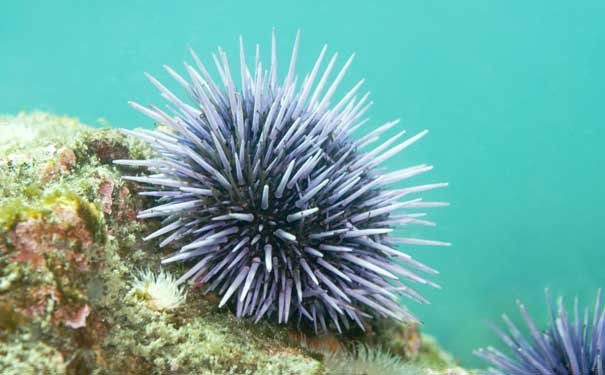Sea urchins might hold the key to better knee and hip replacements, with the development of a new technology that encourages the body to regenerate, and replace the implant with new bone.
Recent research has shed light on the complex mechanisms that form the shells and spines of sea urchins. “Biomimicry is about controlling shape” says Dr Benjamin Matthewson, who has spent five years on the project.
“If you look at nature, there are more or less five polymers that are used to create the diversity which we have around us, and that’s by controlling the shape of them.
Already, the researchers from Victoria University of Wellington in New Zealand have been able to grow sheets of shell by mineralising calcium compounds around hydrogel polymers — the material used in contact lenses. Previous research with animals has shown that when a portion of a healthy bone is replaced with the mineralised polymer, the body assimilates the implant and replaces it with bone.
In the near future, the researchers hope to begin coating existing implants with shell grown in the lab, and expect it to greatly reduce rejection rates. “Because mineralised hydrogels have mechanical and chemical attributes much more similar to bone than a titanium implant, there will be better biocompatibility” explains Dr. Kate McGrath, who supervised Dr. Matthewson’s research.
By further understanding how nature grows such intricate shapes, the researchers hope to eventually be able to control the “growth” of large three dimensional structures that can be used as implants. “But it would only be a temporary implant because the body would be triggered to regenerate itself and, in doing so, completely replace the implant”, says McGrath.








hans
December 15, 2011
I under went partial hip replacement with titanium implant in my bone.Can my femur head growth back with bone impant technology?